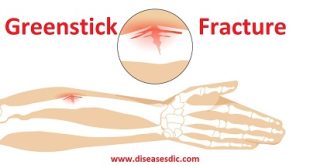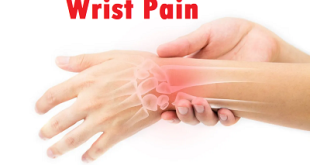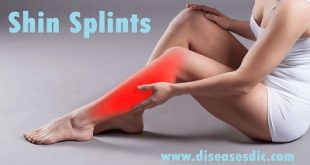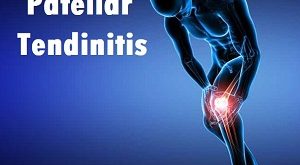Overview
Knee pain is becoming an extremely common problem, especially in the younger population. Several reasons, such as wear and tear, or an injury, can cause knee pain. There are many different ways to treat knee pain, depending on the patient’s cause and condition. Knee pain can affect various parts of the knee. The knee is the joint where the kneecap, the thigh bone, and the bones of the lower leg meet. Your knees also consist of skin, muscles, tendons, cartilage, ligaments, nerves, and blood vessels. The fact that the human body weight is hinged on this joint makes it susceptible to various injuries and wear and tear, thus causing inflammation and pain. Sudden knee pain may be because of an injury or overuse. Knee pain can get aggravated due to obesity or hyperactivity. It may lead to injury to other parts of the leg and can lead to frequent falls. That is why early diagnosis and treatment is important.
Anatomy of the knee
The knee is a vulnerable joint that bears a great deal of stress from everyday activities, such as lifting and kneeling, and from high-impact activities, such as jogging and aerobics.
The knee is formed by the following parts:
- Tibia: This is the shin bone or larger bone of the lower leg.
- Femur: This is the thighbone or upper leg bone.
- Patella: This is the kneecap.
Each bone end is covered with a layer of cartilage that absorbs shock and protects the knee. Basically, the knee is 2 long leg bones held together by muscles, ligaments, and tendons.
There are 2 groups of muscles involved in the knee, including the quadriceps muscles (located on the front of the thighs), which straighten the legs, and the hamstring muscles (located on the back of the thighs), which bend the leg at the knee.
Tendons are tough cords of tissue that connect muscles to bones. Ligaments are elastic bands of tissue that connect bone to bone. Some ligaments on the knee provide stability and protection of the joints, while other ligaments limit forward and backward movement of the tibia (shin bone).
Types of Knee Pain
Front (anterior) knee pain
Pain at the front of your knee may also be called anterior knee pain. Anterior means ‘front’. There are lots of things that can cause this type of knee pain. But most of the time, some simple self-care measures should help to get rid of your pain.
Pain behind the knee (posterior pain)
Pain behind the knee is also called posterior knee pain. The word ‘posterior’ means behind. As well as pain, you may have some swelling. This may be just at the back of your knee, or it can go up into your calf. The swelling may be bad enough to stop you bending your leg properly.
Inner (medial) knee pain
Inner (or medial) knee pain means pain on the side of your knee nearest to the middle of your body (next to your other knee). Medial simply means middle. There is much you can do to manage inner knee pain, and treatments that can help too.
Lateral (outer) knee pain
Outer knee pain or lateral knee pain is pain on the outer side of your knee. That is, on the right side of your right knee or the left side of your left knee. It might just affect your knee or the pain may spread up your thigh.
Prevalence
The overall prevalence was 46.2% (32.2% in men and 58.0% in women, P < 0.001). In 10.3%, 9.1% and 26.8% of subjects, pain was present in right, left or both knees, respectively. The prevalence of unilateral knee pain in dominant leg was 10.4% and 16.1% in right and left knees, respectively. Except for subjects under the age of 60 year, the prevalence was significantly higher in women than in men. The prevalence increased with age in women until 70 year then levelled off (P < 0.001 for trend). The prevalence of knee pain did not increase with age in men, and the mean age of subjects with knee pain was not significantly different from that of subjects without knee pain.
Causes of Knee Pain
Many conditions and injuries can make your knees hurt. Some common causes can include overuse, injuries and arthritis.
Overuse
Repetitive activities can lead to pain Some examples are:
- Patellofemoral pain (runner’s knee): pain under or around the kneecap, often related to mechanics, shape of the knee cap, or
- Osgood-Schlatter disease: In children, swelling in the shinbone below the kneecap due to overuse.
- Tendonitis, involving the quadriceps or patella tendon: repetitive jumping sports such as volleyball or basketball.
Injury
Sudden trauma can damage parts of your knee joint. Common knee injuries can include:
- Anterior cruciate ligament (ACL) injury or medial collateral ligament (MCL) injury: Damage to the main stabilizing ligaments of the knee.
- Bursitis: Inflammation (swelling) of the fluid-filled sacs that cushion the knee joint.
- Kneecap dislocation: Movement out of place by your kneecap (the bone that covers your knee).
- Meniscus tear: Tear in the knee’s cartilage (slippery tissue that helps bones move together smoothly).
Arthritis
Arthritis is a condition that can impact many different joints in your body. When you have arthritis in your knee, it causes the joint to swell. This can be a painful condition. Arthritis in your knee is more likely to develop over time as you age. There are several different types of arthritis that can affect the knees, including:
- Rheumatoid arthritis: This type of arthritis is an autoimmune disease, which means that it attacks the joints of the body, causing inflammation (swelling) and breaking them down.
- Osteoarthritis: This type of arthritis is characterized by a breakdown of cartilage in your joint over a period of time. Body weight can play a big role in your joint health. Being overweight can place extra stress on the knee. This can cause pain. Maintaining a healthy body weight by regularly exercising and eating a nutritious diet can reduce your risk of joint pain.
Symptoms of Knee Pain
The location of the pain can vary depending on which structure is involved. With infection or an inflammatory process, the whole knee might be swollen and painful, while a torn meniscus or fracture of a bone gives symptoms only in one specific location. A Baker cyst will usually cause pain in the back of the knee.
The severity of the joint pain can vary, from a minor ache to severe and disabling pain.
Some of the other signs and symptoms that accompany knee pain are
- Difficulty weight-bearing or walking due to instability of the knee,
- Limping due to discomfort,
- Difficulty walking up or down steps due to ligament damage (sprain),
- Locking of the knee (unable to bend the knee),
- Redness and swelling,
- Inability to extend the knee, and
- Shifting weight to the opposite knee and foot.
Risk factors
A number of factors can increase your risk of having knee problems, including:
Excess weight: Being overweight or obese increases stress on your knee joints, even during ordinary activities such as walking or going up and down stairs. It also puts you at increased risk of osteoarthritis by accelerating the breakdown of joint cartilage.
Lack of muscle flexibility or strength: A lack of strength and flexibility can increase the risk of knee injuries. Strong muscles help stabilize and protect your joints, and muscle flexibility can help you achieve full range of motion.
Certain sports or occupations: Some sports put greater stress on your knees than do others. Alpine skiing with its rigid ski boots and potential for falls, basketball’s jumps and pivots, and the repeated pounding your knees take when you run or jog all increase your risk of knee injury. Jobs that require repetitive stress on the knees such as construction or farming also can increase your risk.
Previous injury: Having a previous knee injury makes it more likely that you’ll injure your knee again.
Complications
Frequently, knee pain will disappear without ever finding a specific cause. Depending on the underlying cause of the pain, the condition can progress and lead to more serious injuries or complications. Usually, these complications are long-term and result in worsening pain or an increasing difficulty to walk.
Diagnosis
Some knee conditions can be diagnosed based on a physical examination alone. Your provider may use additional tests to confirm a diagnosis and determine the best treatments.
Medical History
Your healthcare provider will likely ask you a lot of questions about your pain. Be prepared to tell them:
- Location: Is the pain on one side, the front, or the back of the knee?
- Timing: What time of day is your pain worst? What activities hurt? How long does the pain last?
- Other symptoms: Do you have swelling, fever or chills (a sign of infection), aches in other areas, fatigue, or unexplained weight loss?
Physical Examination
A thorough physical exam is important for finding the cause of knee pain.
Your provider will check for:
- Swelling: Whether there’s swelling and, if so, when it began.
- Range of motion: How well you use your knee, including straightening, bending, and standing.
- Stability: Damage to ligaments can make your knee feel like it’s giving out.
- Locking: Locking is when you can’t bend or straighten your knee. That can be due to something physically blocking the motion or by pain that keeps you from moving it normally.
- Noises: Painful popping, snapping, grinding, or crunching sounds are all clues as to the cause.
Imaging
Your healthcare provider may order imaging studies. Those let them see what’s happening inside.
They usually start with an X-ray. That shows the bones plus signs of soft tissue injury, arthritis, or alignment problems. They may also order an ultrasound or an MRI to help evaluate soft tissue injuries.
Knee Pain Treatment
Conservative care: Many types of knee pain can be relieved and/or resolved with conservative treatments such as:
Rest: When the knee is injured or is inflamed, as in bursitis, tendonitis or arthritis, it’s important to rest the joint and avoid overuse. That may mean keeping the knee straight (extended) or in positions that limit bending.
Ice/heat: Applying ice or cold packs to the knee can reduce inflammation and swelling, especially after an injury. Once swelling is gone, heat may be used to help relax and loosen tissues – although ice is the primary treatment.
Pain relievers: Over-the-counter anti-inflammatory medicines can help relieve knee pain, including ibuprofen and naproxen
Weight loss: Lose weight to reduce pressure on the knees.
Braces: In general, knee braces wrap around the knee and leg and help limit unwanted movement while supporting the knee. They are commonly used when knee ligaments are weak, and help to keep the knee from “buckling.”
Injections in the Knee Joint: Potent anti-inflammatory agents can be injected inside the knee to reduce pain and inflammation. Ozone Gas can also be injected into the knee to reduce pain and inflammation. Another nonsurgical injection technique that can provide relief from knee pain is viscosupplementation. This treatment involves injecting a lubricant into the knee. The filler lubricates and adds cushioning to the joint, allowing bones to move more easily and reducing friction. It is a viable solution for mild to moderate OA.
Stem Cell/Platelet Rich Plasma (PRP) therapy: PRP therapy involves injecting platelets from the patient’s own blood to rebuild a damaged tendon or cartilage. It has been successful in not only relieving the pain, but also in jumpstarting the healing process. The patient’s blood is drawn and placed in a centrifuge for 15 minutes to separate out the platelets. The platelet-rich plasma is then injected into the damaged portion of the tendon or cartilage.
Physical therapy: Physical therapies can help you recover from the injury and decrease the pain you are experiencing. They may also include low-impact stretches and exercises that can strengthen muscles in your knee, improve stability and flexibility, and reduce pressure on the joint.
Surgical options: This includes partial and total knee replacements in case of OA or RA knee. In cases of injuries, we can go for arthroscopic or open repair.
How to prevent knee pain?
Some causes, like accidental injury, arthritis, gout, and genetic conditions, can’t always be avoided. However, some ways to protect your knees and reduce the likelihood of developing knee pain include:
- Always warming up thoroughly before activities
- Stretching regularly, especially the quadriceps (thigh) muscle
- Making sure to strengthen the quadriceps, hamstrings, and hip flexors; these muscles stabilize the knee and prevent imbalances which can cause strains
- Using proper footwear for running, other activities to cushion the knee
- When possible, choosing lower-impact sports like swimming and cycling
- Losing weight or maintaining a healthy weight and eating a healthy diet as recommended by your doctor
- Not smoking
 Diseases Treatments Dictionary This is complete solution to read all diseases treatments Which covers Prevention, Causes, Symptoms, Medical Terms, Drugs, Prescription, Natural Remedies with cures and Treatments. Most of the common diseases were listed in names, split with categories.
Diseases Treatments Dictionary This is complete solution to read all diseases treatments Which covers Prevention, Causes, Symptoms, Medical Terms, Drugs, Prescription, Natural Remedies with cures and Treatments. Most of the common diseases were listed in names, split with categories.








please how can Artities be cured.
Thanks .
Arthritis is a chronic condition with no cure. Management focuses on relieving symptoms and improving joint function. Approaches include medications, physical therapy, lifestyle modifications, and, in severe cases, surgery. Individuals should work closely with healthcare professionals to create a personalized treatment plan based on their specific type of arthritis and symptoms. For the latest information, consult a healthcare provider.
for years now my mum is having serious pains on her knee pls I need a medication for her but not the one that will worry her Bec she has ulcer.
Considering your mom’s knee pain and the presence of ulcer, it’s important to approach treatment cautiously. Nonsteroidal anti-inflammatory drugs (NSAIDs), commonly used for knee pain, can irritate the stomach and may not be suitable for someone with ulcer. Instead, options like acetaminophen (Tylenol) may be considered for pain relief. However, it’s crucial to consult with a healthcare professional for personalized advice, considering your mom’s specific health conditions and any potential interactions with her current medications. Physical therapy and lifestyle modifications may also be recommended for comprehensive knee pain management.
please i need the treatment for knee pain
To manage knee pain, consider rest, elevation, and ice packs to reduce inflammation. Over-the-counter pain medications like acetaminophen or NSAIDs can help alleviate pain. Using compression, a knee brace, or assistive devices may provide support. Explore physical therapy for tailored exercises to strengthen muscles. If pain persists or worsens, consult with a healthcare professional for a proper diagnosis and personalized treatment plan.